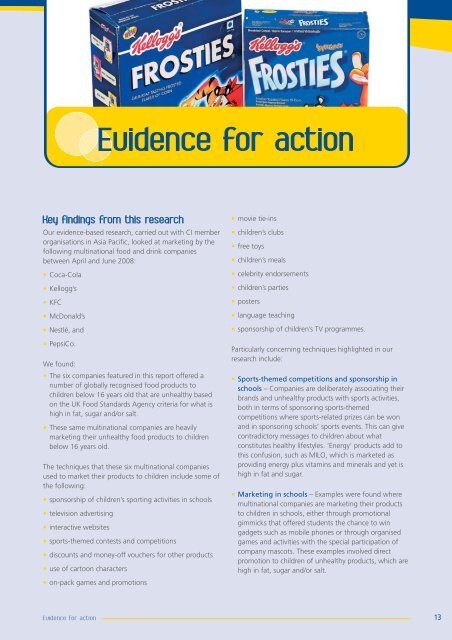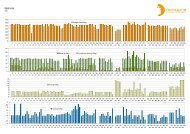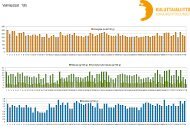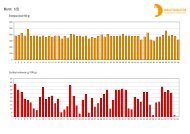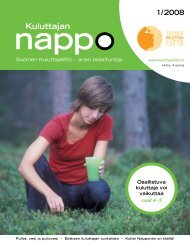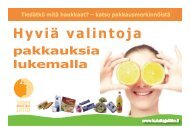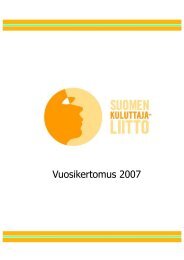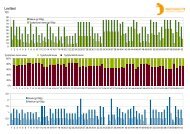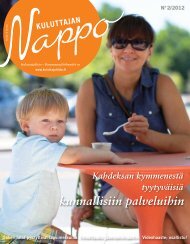Marketing unhealthy food to children in Asia Pacific - Consumers ...
Marketing unhealthy food to children in Asia Pacific - Consumers ...
Marketing unhealthy food to children in Asia Pacific - Consumers ...
- No tags were found...
Create successful ePaper yourself
Turn your PDF publications into a flip-book with our unique Google optimized e-Paper software.
Evidence for actionKey f<strong>in</strong>d<strong>in</strong>gs from this researchOur evidence-based research, carried out with CI memberorganisations <strong>in</strong> <strong>Asia</strong> <strong>Pacific</strong>, looked at market<strong>in</strong>g by thefollow<strong>in</strong>g mult<strong>in</strong>ational <strong>food</strong> and dr<strong>in</strong>k companiesbetween April and June 2008:• Coca-Cola• Kellogg’s• KFC• McDonald’s• Nestlé, and• PepsiCo.We found:• The six companies featured <strong>in</strong> this report offered anumber of globally recognised <strong>food</strong> products <strong>to</strong><strong>children</strong> below 16 years old that are <strong>unhealthy</strong> basedon the UK Food Standards Agency criteria for what ishigh <strong>in</strong> fat, sugar and/or salt.• These same mult<strong>in</strong>ational companies are heavilymarket<strong>in</strong>g their <strong>unhealthy</strong> <strong>food</strong> products <strong>to</strong> <strong>children</strong>below 16 years old.The techniques that these six mult<strong>in</strong>ational companiesused <strong>to</strong> market their products <strong>to</strong> <strong>children</strong> <strong>in</strong>clude some ofthe follow<strong>in</strong>g:• sponsorship of <strong>children</strong>’s sport<strong>in</strong>g activities <strong>in</strong> schools• television advertis<strong>in</strong>g• <strong>in</strong>teractive websites• sports-themed contests and competitions• discounts and money-off vouchers for other products• use of car<strong>to</strong>on characters• on-pack games and promotions• movie tie-<strong>in</strong>s• <strong>children</strong>’s clubs• free <strong>to</strong>ys• <strong>children</strong>’s meals• celebrity endorsements• <strong>children</strong>’s parties• posters• language teach<strong>in</strong>g• sponsorship of <strong>children</strong>’s TV programmes.Particularly concern<strong>in</strong>g techniques highlighted <strong>in</strong> ourresearch <strong>in</strong>clude:• Sports-themed competitions and sponsorship <strong>in</strong>schools – Companies are deliberately associat<strong>in</strong>g theirbrands and <strong>unhealthy</strong> products with sports activities,both <strong>in</strong> terms of sponsor<strong>in</strong>g sports-themedcompetitions where sports-related prizes can be wonand <strong>in</strong> sponsor<strong>in</strong>g schools’ sports events. This can givecontradic<strong>to</strong>ry messages <strong>to</strong> <strong>children</strong> about whatconstitutes healthy lifestyles. ‘Energy’ products add <strong>to</strong>this confusion, such as MILO, which is marketed asprovid<strong>in</strong>g energy plus vitam<strong>in</strong>s and m<strong>in</strong>erals and yet ishigh <strong>in</strong> fat and sugar.• <strong>Market<strong>in</strong>g</strong> <strong>in</strong> schools – Examples were found wheremult<strong>in</strong>ational companies are market<strong>in</strong>g their products<strong>to</strong> <strong>children</strong> <strong>in</strong> schools, either through promotionalgimmicks that offered students the chance <strong>to</strong> w<strong>in</strong>gadgets such as mobile phones or through organisedgames and activities with the special participation ofcompany mascots. These examples <strong>in</strong>volved directpromotion <strong>to</strong> <strong>children</strong> of <strong>unhealthy</strong> products, which arehigh <strong>in</strong> fat, sugar and/or salt.Evidence for action13


